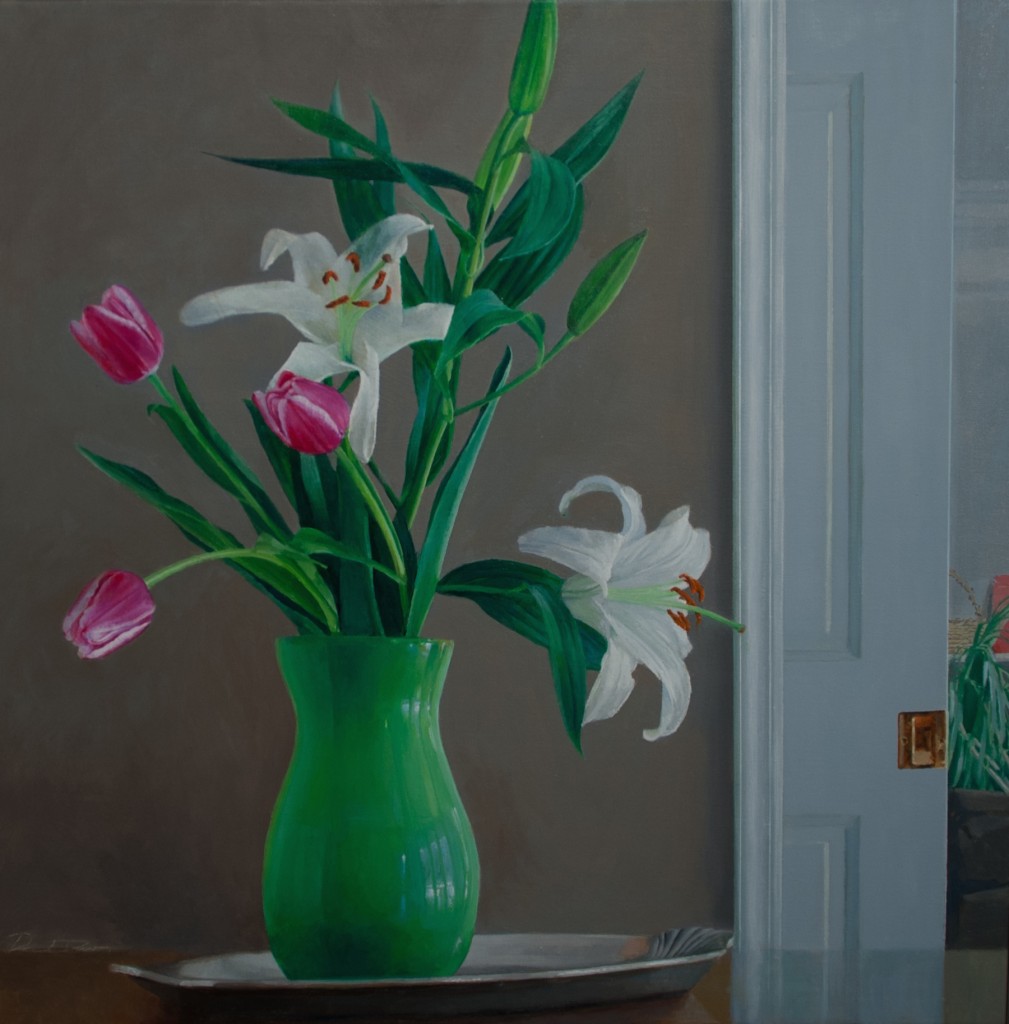The mystery of painting
If someone were to ask me right now what my painting is about, I might offer something that would probably occur to me if I were someone else appraising the work I’ve done over the past couple years. I might say Dorsey is continuing to work in several different modes: adding to the series of large jars he has exhibited in the past, doing a few suburban landscapes, and exploring smaller alla prima paintings executed very quickly, almost like Japanese sumi-e. In all of this work, he’s drawn to the ordinary and everyday. Mostly, though, he has continued his central pursuit of fairly traditional still life. His love for this genre seems to come from a variety of influences. Yet the effect of these paintings when seen together, aside from whatever virtues still life has always had, is to make one feel as if the artist is wistful, even desperate, for a world that’s fast disappearing. There’s something about these paintings that reminds one of the rag waved in the air by the uppermost member of that pile of survivors in Gericault’s Raft of the Medusa, the one trying to catch the eye of a savior on the tall ship just emerging over the horizon before time runs out on the life raft. In a time when the middle class seems to be rapidly disappearing, taking with it the promise of opportunity for most people in our society, Dorsey seems to be drawn again and again to the subject of domestic serenity as embodied in a little heirloom sugar bowl or a couple flowers from a backyard garden. Intentionally small potatoes—though, strictly speaking, he hasn’t painted any potatoes yet. Domestic happiness was the daemon of both Chardin and Vermeer, two painters who have had a powerful sway over his work so far. It isn’t a small thing, though, to have reminders of what it meant in America to have a flourishing middle class, a thriving bourgeoisie so despised by intellectuals, the economic topsoil of a robust free society, something fast disappearing in the world right now.
This might be what someone would say about the paintings in this show, though it’s merely hindsight and speculation on my part. None of this even crossed my mind as I’ve done this work, though much of it sounds sensible enough now. Subconsciously, I’m drawn to simple and commonplace subjects, and now that we live in a time of extremes, a novel way to go against the grain these days might be to offer little glimpses of a lost American dream. But this commentary is all ex post facto on my part. None of this has much to do with what consciously drives me as I paint, which is mostly concerned with tackling formal challenges. If I have a philosophy of painting, it’s essentially that most of what a great painting conveys to a viewer is invested in the painting subconsciously and non-conceptually—at the level where a painting is a sort of visual music. It can’t be translated into words, and what matters most remains as elusive for the painter as it is for the viewer. A good painting’s effect has far more to do with the physical act of painting than an artist’s intentions. You start off wanting to create an image that captures certain qualities of light and color and form, and yet what often has the biggest impact on a viewer isn’t, strictly speaking, visible at all. It’s the silent resonance of the slow time invested in making the picture. Painting is an act of intense mindfulness, a way of training the mind for the patience required to see and show what’s actually see-able as clearly as possible, in the hope of triggering a sense of an entire world behind and around it. Slow time, as Keats put it, is how I lure my heart out into the open so that I can get to know it a little better.

Comments are currently closed.